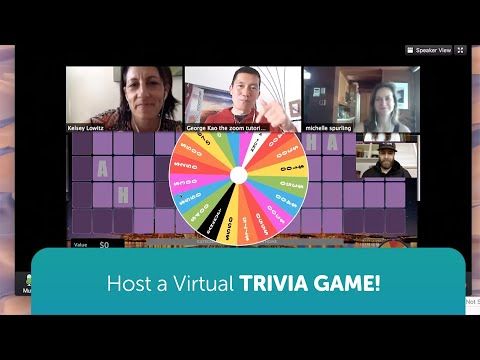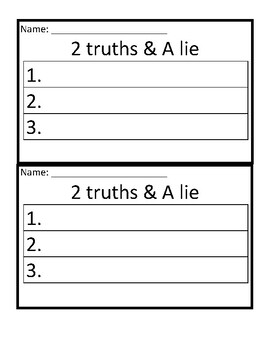Virtual meetings can often be dry and unengaging, making it difficult for team members to connect and build relationships. That’s why it’s important to incorporate virtual icebreakers into your meetings to help participants get to know each other better and build a sense of community in your remote team.
Here are five different methods for engaging with Virtual icebreaker activities in virtual meetings:
Interactive Games
Interactive games are a great way to get participants engaged and involved. Popular games for virtual team meetings include virtual trivia, bingo, virtual icebreaker, and Pictionary. These games can be easily adapted to a virtual setting and are a fun way to encourage teamwork and friendly competition.
Here are some virtual games that can be used as icebreakers activities
Virtual Trivia: Participants can be divided into teams and compete in a trivia game. Questions can be related to the company, current events, or general knowledge.

Type image caption (optional)
Bingo: Participants can play virtual bingo with a custom-made bingo card. Each square can contain a fact or information about the participant.

Pictionary: Participants can draw and guess each other’s drawings in a virtual game of Pictionary. This can be done through a virtual whiteboard or an online drawing tool.
Two Truths and a Lie: Participants introduce themselves by sharing two true statements about themselves and one false statement. The other participants try to guess which statement is the lie.

Word Association: The facilitator starts by saying a word, and then each participant says a word that comes to their mind in response. The goal is to keep the chain going as long as possible.

Virtual Escape Room: Participants work together to solve puzzles and escape from a virtual escape room. This can be done through a web-based platform or a video conferencing tool.

Virtual Charades: Participants act out a word or phrase without speaking and other participants try to guess what they are acting out.
Personal Introductions
Personal introductions are a simple and effective way to help participants get to know each other. This can be as simple as asking each participant to share their name, role, and fun fact about themselves. Alternatively, you could use a more structured approach, such as having participants share their backgrounds and interests using a designated icebreaker tool.

Here are some tips for conducting personal introductions as an ice breaker activity
Set the Tone: Start the introduction by setting a relaxed and friendly tone for the meeting. Encourage participants to be open and honest about themselves and to be respectful of others.
Allocate Time: Allocate a specific amount of time for the introductions, such as 5-10 minutes. This will ensure that everyone has an opportunity to share and that the activity does not take up too much time.
Encourage Participation: Encourage all participants to participate in the introductions. This can be done by asking each person to share in a specific order or by randomly selecting participants.
Keep it Simple: Personal introductions should be kept simple and straightforward. Ask participants to share their names, their roles in the company, and a fun fact about themselves.
Use a Tool: Consider using a virtual icebreaker tool to facilitate the introductions. This can help to keep the activity organized and make it easier for participants to share their information.
Allow Time for Questions: After each person has finished their introduction, allow time for other participants to ask questions and engage in conversation.
Follow-Up: After the introductions, consider following up with a group discussion or another icebreaker activity to build on the connections made during the introductions.
Group Discussions
Group discussions can be a great way to get participants to talk and interact with each other. This could be in the form of a debate, where participants are asked to discuss a specific topic, or a question and answer session, where participants are asked to share their thoughts and opinions on a particular topic.

Here are some tips for using group discussions as an icebreaker activity:
Choose a relevant and thought-provoking topic: The topic should be something that will get participants talking and engaged. It could be related to current events, industry trends, or a thought-provoking question.
Assign a facilitator: The facilitator’s role is to keep the discussion on track and ensure that everyone gets a chance to participate.
Encourage participation: Encourage all participants to share their thoughts and opinions. You can do this by asking open-ended questions and actively listening to each participant.
Use virtual tools to facilitate the discussion: Virtual tools like breakout rooms, polls, and whiteboards can be used to make the discussion more interactive and engaging.
Set a time limit: Set a time limit for the discussion to ensure that it doesn’t drag on and that everyone has a chance to participate.
Summarize key points: At the end of the discussion, the facilitator can summarize the key points and takeaways to ensure that everyone is on the same page.
Team Building Exercises
Team-building exercises are a great way to help participants build relationships and work together. Popular team building exercises for virtual meetings include virtual scavenger hunts, where participants are tasked with finding items around their home or office, and virtual escape rooms, where participants work together to solve puzzles and escape from a virtual room.
Here are five effective team-building exercises for virtual meetings:
Virtual Scavenger Hunt: In this activity, the facilitator provides a list of items that can be found around each participant’s home or office. The participants have a set amount of time to find as many items on the list as possible and then share their findings with the group. This is a fun and interactive way to get people moving and encourage friendly competition.
Trivia Challenge: In this activity, the facilitator asks participants a series of trivia questions on a variety of topics. Participants can work together in teams or individually to answer the questions. This is a fun and engaging way to get people thinking and to encourage teamwork.

Virtual Escape Room: In this activity, participants work together to solve puzzles and escape from a virtual room. The facilitator provides a set of clues and puzzles for the participants to solve, and participants must communicate and work together to find the solution. This is a great way to encourage collaboration and problem-solving skills.
Picture Association: In this activity, the facilitator shows a series of images, and participants must associate the images with a word or phrase. Participants can work together in teams or individually to come up with the answers. This is a fun and creative way to get people thinking and to encourage teamwork.
Remote Book Club: In this activity, participants read a book or watch a movie and then discuss their thoughts and opinions during the virtual meeting. This is a great way to encourage teamwork and communication, and it also provides an opportunity for participants to learn about each other’s interests and hobbies.

Virtual Tours
Virtual tours can be a fun and engaging way to help participants get to know each other. This could be as simple as asking each participant to share a photo of their home office or taking a virtual tour of a participant’s city or neighborhood. This is less used icebreaker technique of all, as it requires the participant to share their personal space.
Also Read: Enhance Audience Engagement with Polls in aapoon meet

In conclusion, there are many different methods for engaging with icebreaker activities in virtual meetings. Whether you choose to play a game, have a group discussion, or participate in a virtual tour, the key is to find activities that encourage interaction, teamwork, and creativity. By incorporating icebreaker activities into your virtual meetings, you can help build stronger relationships and a more connected team.


